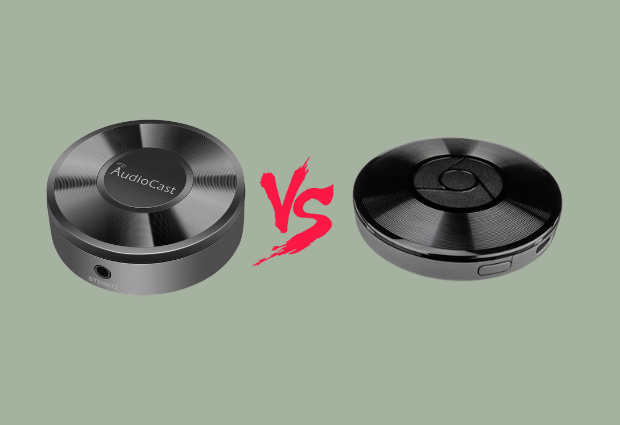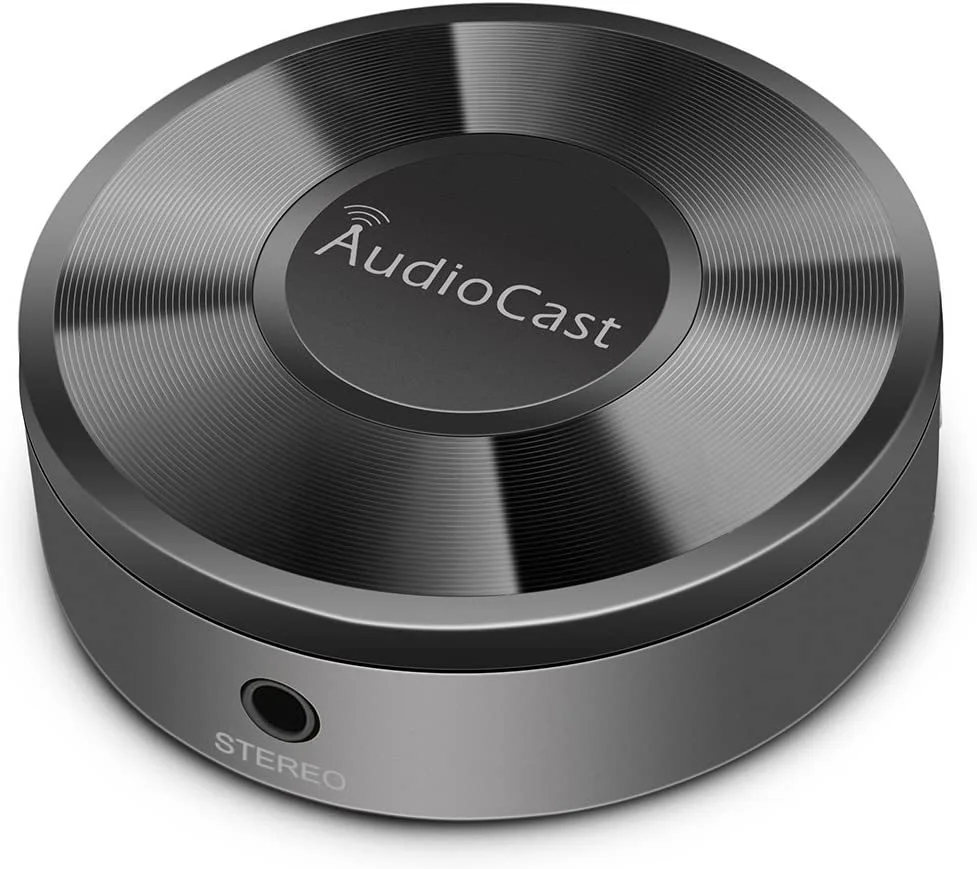Comparison made to Audiocast vs Chromecast audio; I’ve prepared a short and simple article to aid since there are a lot of people looking to compare these two products. For more information, keep reading.
Understanding the Audiocast
What is AudioCast?
A little gadget called AudioCast connects to your speaker and allows Wi-Fi music streaming.
Once everything is set up, you can easily cast your favorite music to the greatest speakers in the house using your iPhone, iPad, Android phone or tablet, Mac, or Windows laptop.
What is AudioCast used for?
Listen to the millions of songs, radio stations, and tunes on Spotify, Pandora, Tunein, and more. There is no limit to the music, radio stations, and podcasts you may enjoy since we are always releasing new applications.
To quickly stream music to your speakers, choose the device from the AudioCast applications. From anywhere in the house, you can use your phone to search, play, pause a song queue, and adjust the level.
Understanding the Chromecast Audio
Chromecast Audio streams audio from the internet to your current speaker system via your Wi-Fi network. Chromecast Audio is powered by the included power source and USB cord, and is operated via devices connected to the same Wi-Fi network, such as smartphones, tablets, or PCs.
How does Chromecast function on a sound bar?
Start with these easy steps:
- Use the audio wire to connect Chromecast Audio to your speaker. Then, using the included power source,
- Connect the USB power cord to your Chromecast Audio and plug the other end into a power outlet.
- Install the Google Home app.
- Set up Chromecast Audio.
- Enjoy the song you’re listening to!
The audio quality is not constrained by Chromecast Audio.
However, since Chromecast does not have its own DAC and the audio quality relies on the connected device, it is difficult to evaluate if Chromecast Audio gives greater audio quality than Chromecast.
In terms of bandwidth (additional audio channels), an HDMI connection has an advantage over an optical link.
Please be aware that your speakers and the music (or other media) source have the most impact on the audio quality. For the majority of users, Chromecast and Chromecast Audio are not expected to be a barrier for audio quality.
Comparison: AudioCast vs Chromecast Audio
I can contrast the AudioCast with Chromecast Audio. My ancient Russound whole-house system is gradually losing its use. But employing a media server with a large and expanding library of flac files, the system is very dependable.
Factor 1: Installation
Additionally simple to install is the Chromecast Audio. in contrast to AudioCast. It is capable of 5 GHz ac. Therefore, you may divide the traffic. Although not HIFI standard yet, the sound is improved. To my native Russound SMS media server, there is still no comparable.
Factor 2: Hookup/Connection
The audio cast is firstly easily connected with WPS, but if your router has a secret SSID, it’s a little more difficult. Additionally, it does not support 5 GHz (a little overkill, but not so good if you have a big family and want to divide the traffic on your network).
Factor 3: Equalizer
For individualized treble and bass adjustment, there is an equalizer. yet quite elementary. The whole dynamic range may be enabled. Pop, jazz, and other genres benefit from the improved sound, while classical music isn’t as well served. However, it has superb sound settings for a $35 basic device, making the sound considerably better than the AudioCast gadget.
Factor 4: Software Part
The software lacks appeal. Not as accommodating to iOS devices. There is no airplay support. The applications capability for casting audio is also a little less user-friendly. However, you can still cast Spotify, iHeartRadio, and Pandora on the gadget, freeing up your portable device.
Factor 5: Cost
The cost is around the same. However. I was only able to give AudioCast three stars. The sound quality is poor, and there is no simple control. However, the app is simpler to use and more extensible.
Factor 6: Sound Output
The sound is the most important thing to me. Therefore, despite the peculiarities of the app and the absence of compatibility for iOS, I have to stick with Chromecast Audio (airplay). But after your playlist is prepared, the music is ultimately what matters.
Remarks
My music collection is being moved back and forth like a choir since I moved my data to a NAS system for storage. I can rapidly connect my Russound system to a source that is managed by the device using both Chromecasts.
The audio is faint and a little flat. Treble with a high pitch and little midrange. just volume settings; no equalization controls. The app’s UI, though, is simple to use. With the native applications, you could cast straight from the device, freeing up your iPhone or Android smartphone. To avoid slowness and network traffic, you must cast via your mobile device if your NAS lacks a native music server software.


